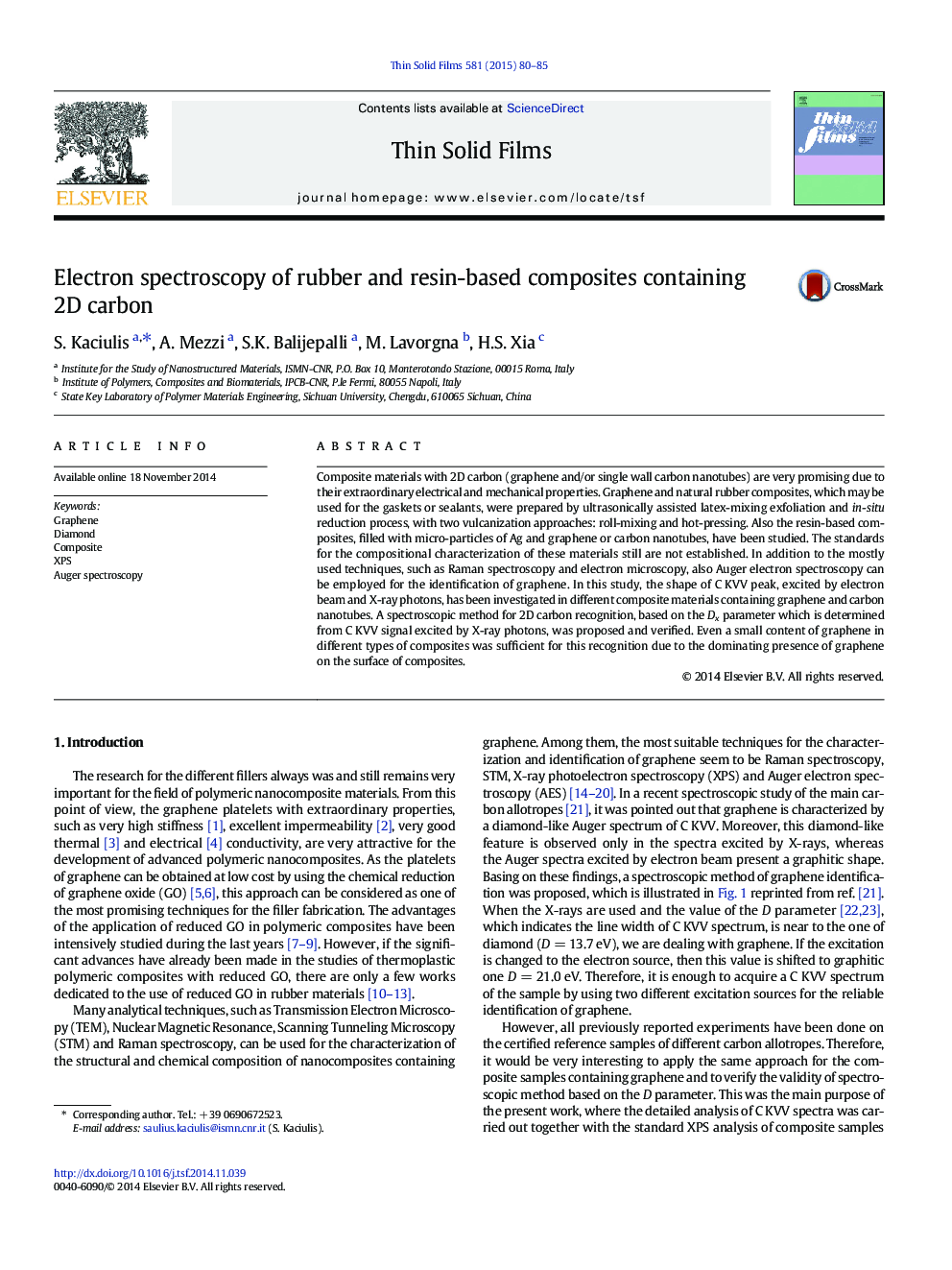| Article ID | Journal | Published Year | Pages | File Type |
|---|---|---|---|---|
| 1664804 | Thin Solid Films | 2015 | 6 Pages |
Abstract
Composite materials with 2D carbon (graphene and/or single wall carbon nanotubes) are very promising due to their extraordinary electrical and mechanical properties. Graphene and natural rubber composites, which may be used for the gaskets or sealants, were prepared by ultrasonically assisted latex-mixing exfoliation and in-situ reduction process, with two vulcanization approaches: roll-mixing and hot-pressing. Also the resin-based composites, filled with micro-particles of Ag and graphene or carbon nanotubes, have been studied. The standards for the compositional characterization of these materials still are not established. In addition to the mostly used techniques, such as Raman spectroscopy and electron microscopy, also Auger electron spectroscopy can be employed for the identification of graphene. In this study, the shape of C KVV peak, excited by electron beam and X-ray photons, has been investigated in different composite materials containing graphene and carbon nanotubes. A spectroscopic method for 2D carbon recognition, based on the Dx parameter which is determined from C KVV signal excited by X-ray photons, was proposed and verified. Even a small content of graphene in different types of composites was sufficient for this recognition due to the dominating presence of graphene on the surface of composites.
Related Topics
Physical Sciences and Engineering
Materials Science
Nanotechnology
Authors
S. Kaciulis, A. Mezzi, S.K. Balijepalli, M. Lavorgna, H.S. Xia,
